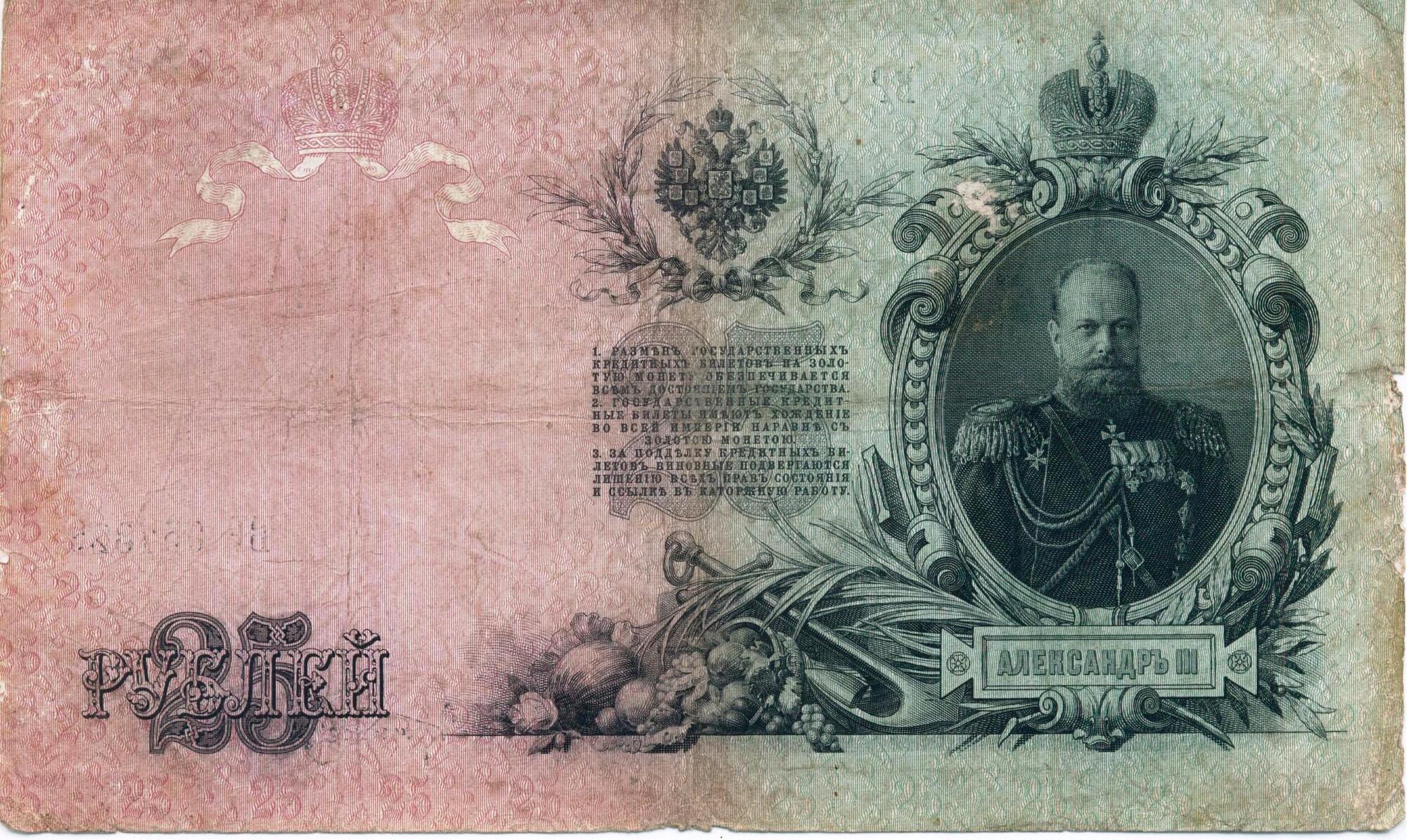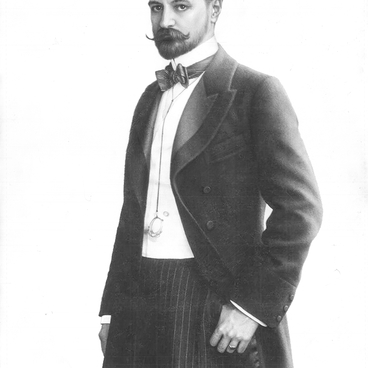This type of a bank note was issued since 1909. The pre-revolutionary bons were used on the territory of Russia before their full withdrawal in 1922. They circulated along with credit notes issued in 1898. All notes were emitted by the Expedition of Storing State Papers in Petrograd.
Design of the notes issued during the tsar period, Russian Provisional Government, and the Soviet Government almost didn’t change. The corrections were only made to the inscription and the series. Lilac, green, and black colours were used in their palette.
The bank note’s obverse had inscriptions: ‘State’, ‘CREDIT NOTE’, ‘TWENTY-FIVE’, ‘The State Bank exchanges credit notes to the coined gold without the sum limit (1 rouble = 1/15 of imperial and contains 17,424 parts of pure gold)’. Number 25 in the floral ornament is indicated as well. The place for a manager’s and a cashier’s signature is left. The left part is decorated with a cartouche with the Lesser Coat of Arms placed in it. In the lower right part the first year of bon’s issue is indicated (1909).
The bank note’s reverse has number 25 in its lower left part with the inscription ‘ROUBLES’ over it. The right part has the portrait of Alexander III placed in originally decorated oval frame with the imperial crown on the top. Above the portrait there’s an emperor’s name in the frame. The allegories of fruitfulness and victory along with the anchor symbolizing the Russian navy are depicted in the bon.
In the centre of the bank note there’s a number 25 with the inscription on it: “1. The exchange of the State credit notes to the coined gold is guaranteed by the whole state”s property. 2. The State credit notes circulate on the territory of the Empire on the same basis as the coined gold. 3. The forgery incurs a punishment (attainder and transportation to hard labor).” Above there’s a cartouche with a Lesser Coat of Arms placed in it.
The whole surface of a thin bank note’s paper is covered with the watermarks “25” and “rub” repeated many times.
The shown exhibit item is of historical and antique value.
Design of the notes issued during the tsar period, Russian Provisional Government, and the Soviet Government almost didn’t change. The corrections were only made to the inscription and the series. Lilac, green, and black colours were used in their palette.
The bank note’s obverse had inscriptions: ‘State’, ‘CREDIT NOTE’, ‘TWENTY-FIVE’, ‘The State Bank exchanges credit notes to the coined gold without the sum limit (1 rouble = 1/15 of imperial and contains 17,424 parts of pure gold)’. Number 25 in the floral ornament is indicated as well. The place for a manager’s and a cashier’s signature is left. The left part is decorated with a cartouche with the Lesser Coat of Arms placed in it. In the lower right part the first year of bon’s issue is indicated (1909).
The bank note’s reverse has number 25 in its lower left part with the inscription ‘ROUBLES’ over it. The right part has the portrait of Alexander III placed in originally decorated oval frame with the imperial crown on the top. Above the portrait there’s an emperor’s name in the frame. The allegories of fruitfulness and victory along with the anchor symbolizing the Russian navy are depicted in the bon.
In the centre of the bank note there’s a number 25 with the inscription on it: “1. The exchange of the State credit notes to the coined gold is guaranteed by the whole state”s property. 2. The State credit notes circulate on the territory of the Empire on the same basis as the coined gold. 3. The forgery incurs a punishment (attainder and transportation to hard labor).” Above there’s a cartouche with a Lesser Coat of Arms placed in it.
The whole surface of a thin bank note’s paper is covered with the watermarks “25” and “rub” repeated many times.
The shown exhibit item is of historical and antique value.



